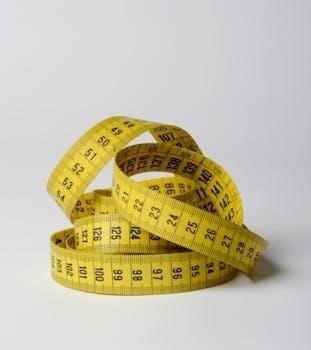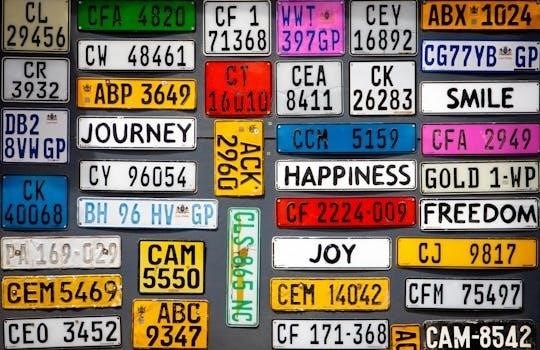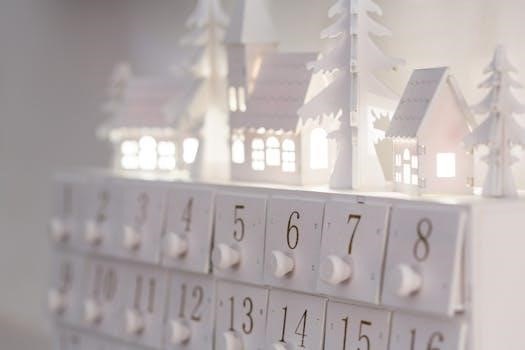This section offers a variety of printable PDF worksheets designed to help students practice converting improper fractions into mixed numbers. These resources provide a structured approach to mastering this essential mathematical skill, with step-by-step guides and practice problems.
Understanding Improper Fractions
Improper fractions are a fundamental concept in mathematics, representing quantities where the numerator is greater than or equal to the denominator. Unlike proper fractions, which represent parts of a whole less than one, improper fractions signify one or more whole units combined with a fractional part. For instance, 7/4 indicates that we have more than one whole, specifically one whole and three-fourths. This understanding is crucial as it lays the groundwork for converting these fractions into mixed numbers, making them easier to visualize and interpret. Visual models, like partitioned shapes, help illustrate how the numerator represents the total number of parts while the denominator indicates the number of parts in one whole. Recognizing improper fractions is the first step toward understanding fractions greater than one, a concept that’s vital for more advanced mathematical operations. These fractions form a basis for understanding the relationship between parts and wholes, and the ability to convert them to mixed numbers allows for easier application in real-world scenarios and problem-solving.
Defining Mixed Numbers
Mixed numbers are a combination of a whole number and a proper fraction, representing a quantity greater than one. They provide an alternative way to express values that are more than a single whole unit. For example, 2 1/2 signifies two whole units and one-half of another unit. This representation is often more intuitive and easier to grasp than improper fractions, especially when visualizing quantities. Understanding mixed numbers involves recognizing the whole number as a complete entity, while the fractional part represents the remaining portion. They are commonly used in everyday life, such as in cooking recipes, measurements, and timekeeping. The ability to convert between mixed numbers and improper fractions is a crucial skill in mathematics, allowing for flexibility in calculations and problem-solving. Mixed numbers offer a practical and visual way to represent fractions that are greater than one, making them an essential tool in mathematical understanding and real-world applications. They bridge the gap between fractions and whole numbers, providing a comprehensive view of numerical values.
The Conversion Process⁚ Improper to Mixed
The conversion of an improper fraction to a mixed number involves dividing the numerator by the denominator. The quotient obtained from this division becomes the whole number part of the mixed number. The remainder from the division, if there is one, is then placed over the original denominator to form the fractional part. This process is foundational for understanding the relationship between improper fractions and mixed numbers. For example, if we have the improper fraction 11/4, dividing 11 by 4 yields a quotient of 2 and a remainder of 3. Therefore, the mixed number is 2 3/4. This systematic approach ensures an accurate transformation of the fraction. It is essential to grasp this conversion process as it facilitates practical applications of fractions in various mathematical and real-world scenarios. The conversion process simplifies complex fractions into more manageable mixed numbers, allowing for easier comprehension and application. The ability to confidently convert between improper fractions and mixed numbers is a vital step in developing a complete understanding of fractional concepts.
Step-by-Step Conversion Guide
To convert an improper fraction to a mixed number, follow these precise steps⁚ First, identify the numerator and the denominator of the improper fraction. Next, divide the numerator by the denominator using long division or any other preferred method. The whole number result of this division becomes the whole number part of the mixed number. If there is a remainder from the division, this remainder becomes the numerator of the fractional part of the mixed number. The denominator of this fractional part remains the same as the original improper fraction’s denominator. Finally, combine the whole number part and the fractional part to form the mixed number. For instance, if you are converting 17/5, dividing 17 by 5 gives a quotient of 3 with a remainder of 2. The mixed number will then be 3 2/5. Always double-check your division and ensure the remainder is less than the denominator. This systematic method guarantees precise conversions, making it easier for students to understand and practice. This step-by-step guide is a clear and logical way to approach converting fractions.
Visual Models for Conversion
Visual models offer an effective way to grasp the concept of converting improper fractions to mixed numbers, particularly for visual learners. These models often use shapes, such as circles or rectangles, that are divided into equal parts. To represent an improper fraction visually, you can draw a series of these shapes, each divided into the same number of parts as the denominator. Then, shade the number of parts equal to the numerator. This often leads to fully shaded shapes and a partially shaded one. For example, if you want to represent 7/3, you’d draw three shapes each divided into three equal parts. You would fully shade two shapes (6/3) and shade one part of the third shape (1/3). By counting the number of fully shaded shapes, you get the whole number part of the mixed number. The shaded parts in the partially shaded shape give the numerator of the fractional part. So, 7/3 visually transforms into two whole shapes and one part of another shape, representing 2 1/3. This visual approach clarifies the relationship between the two forms of fractions. It also helps in fostering a deeper understanding of fraction concepts, making it a practical tool for instruction.
Worksheet Examples and Practice Problems
The worksheets in this section contain various examples and practice problems designed to reinforce the conversion process. These problems range in difficulty, starting with simpler conversions suitable for beginners and progressing to more complex fractions for advanced learners. An example problem might ask students to convert 11/4 into a mixed number. Students would divide 11 by 4, finding that 4 goes into 11 two times with a remainder of 3. Thus, the mixed number would be 2 3/4. Other examples will include larger numbers, such as 25/6 or 37/8, to challenge students’ understanding. The practice problems also help students to recognize common patterns and develop a strategy for tackling future conversions. Some worksheets may also include visual aids, such as diagrams or fraction bars, to support the conversion process. These visual aids help students understand the relationship between the improper fraction and the mixed number representation. Regular practice with these problems is crucial for students to build confidence and mastery over improper fraction to mixed number conversions. Furthermore, the variety of problems helps ensure the student is prepared for different scenarios and complexities.
Grade Level Appropriateness

The worksheets are designed to be appropriate for students in elementary and middle school, primarily focusing on grades 4 through 6. Grade 4 worksheets often introduce the concept of improper fractions and mixed numbers, starting with simpler conversions and visual aids to help students grasp the relationship between the two representations. By grade 5, students will typically work with more complex improper fractions and mixed numbers and they start to perform operations using these numbers. Grade 6 worksheets further challenge students with more abstract problems and more complicated conversions, sometimes incorporating these concepts into problem solving situations. The worksheets can be adapted for students in other grade levels based on their individual needs and current math curriculum. For younger students, starting with visual models and simpler fractions can help ease them into this concept. For older students, these worksheets can serve as a review or practice with the basic principles of fractions and can be used to prepare them for more complex mathematical concepts in higher grades. The worksheets can also be used as supplemental material for students who need extra support or additional practice to reinforce their understanding of converting between improper fractions and mixed numbers.

Free Printable Worksheet Resources
Numerous websites offer free printable worksheets focused on converting improper fractions to mixed numbers, which can be easily accessed and downloaded in PDF format. These resources are readily available for educators and parents looking for practice materials for their students or children. Many of these websites provide a variety of worksheets, catering to different skill levels and learning needs. Some worksheets offer a step-by-step learning process, which helps students understand the concepts better and develop strategies for solving these problems. These websites often include visual models and real-world examples to make learning more engaging and accessible. Teachers and parents can utilize these worksheets in classrooms or at home for extra practice or homework assignments, without any cost. These printable worksheets are not only for student practice but also for assessment of understanding in this particular concept of fractions. These free resources include varied activities, such as matching exercises, ordering fractions, and word problems to help students apply their knowledge in practical situations. The accessibility of these resources makes it easy for educators to incorporate them into their lesson plans and for parents to supplement their child’s learning at home.
Benefits of Using Worksheets

Utilizing worksheets for converting improper fractions to mixed numbers offers numerous educational advantages. These worksheets provide structured practice, enabling students to reinforce their understanding of the conversion process. Worksheets often include a variety of problems with varying difficulty levels, which allows students to gradually improve their skills. The repetitive nature of worksheet exercises aids in memorization and helps students become more fluent in the conversion process. Furthermore, worksheets provide an avenue for students to self-assess their progress and identify areas where they need more support. By working through multiple examples, students can develop a deeper understanding of the relationship between improper fractions and mixed numbers. Worksheets also facilitate active learning, promoting a hands-on approach to mathematics. These resources can be used both in the classroom and at home, making them versatile for different learning environments. Teachers can use worksheets to track student progress and to identify areas of difficulty for the entire class. Moreover, the tangible aspect of a worksheet helps students stay focused and engaged in the learning process. The use of worksheets also promotes the development of problem-solving skills, which are crucial in mathematics education.

Worksheet Variations and Difficulty Levels
The variety in worksheets designed for converting improper fractions to mixed numbers caters to different learning needs and skill levels. Some worksheets introduce the concept using visual models, helping younger learners grasp the relationship between the two forms of fractions. These visual aids often include shaded shapes that represent the fractional parts, making the abstract idea more concrete. Other worksheets focus on numerical conversions, beginning with simpler fractions and gradually progressing to more complex ones. The difficulty levels can vary based on the size of the numbers involved, the need for simplification, and the inclusion of real-world scenarios. Some worksheets might present the problems in a straightforward manner, while others may require multiple steps or a combination of skills. There are also variations in the way problems are presented, including matching exercises, ordering tasks, and word problems. This variety helps students develop a comprehensive understanding of improper fractions and mixed numbers. The worksheets can also be differentiated, offering leveled support for students who need extra practice or providing challenges for more advanced students. This makes the worksheets adaptable for a wide range of classrooms and individual learning needs. The diverse formats ensure that students remain engaged and challenged throughout the learning process.
Applications of Mixed Numbers and Improper Fractions
Mixed numbers and improper fractions are not just abstract mathematical concepts; they have numerous practical applications in everyday life. In cooking, recipes often use mixed numbers to represent measurements of ingredients, like 2 1/2 cups of flour or 1 3/4 teaspoons of baking powder. Understanding how to convert between mixed numbers and improper fractions is crucial for accurately scaling recipes up or down. In construction and carpentry, measurements frequently involve mixed numbers, such as 3 5/8 inches for the length of a board or 1 1/4 feet for the thickness of a panel. Improper fractions become useful when performing calculations, like determining the total length of multiple boards laid end-to-end. In time management, fractions can represent portions of an hour or day; for example, if a project takes 3/4 of an hour, you may use it as a component of the total time. In educational settings, these fractions are important for understanding mathematical concepts like ratios, proportions, and rates. Students need to know how to work with both mixed numbers and improper fractions to tackle more advanced math problems. The ability to convert between these forms is essential for accurate problem-solving in various fields, making it a critical skill to learn and practice. They appear in many real world situations.
